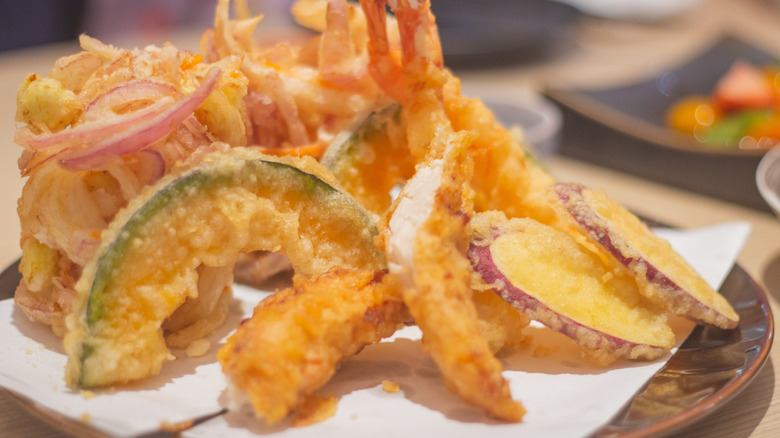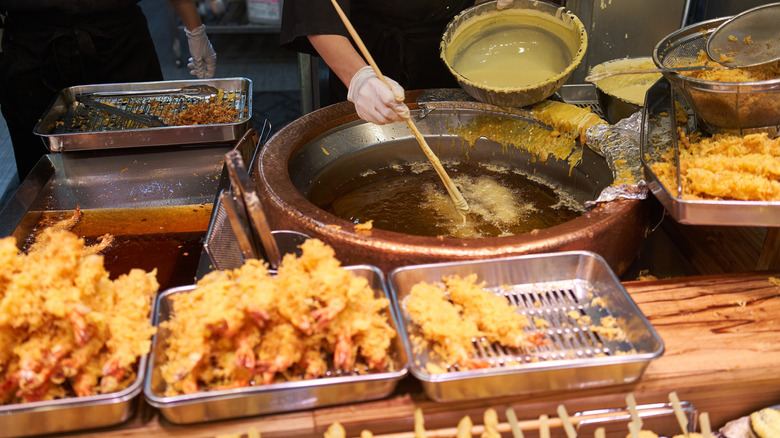How To Tell If Your Tempura Is Cooked
Tempura is a Japanese style of deep frying that's popular in the United States — in fact, it's even the secret technique behind McDonald's chicken nuggets. A special batter of flour, eggs, and ice-cold water creates a light, crisp, bumpy coating on meats (particularly shrimp) and slices of vegetables fried in hot oil. The end result is a tasty dish that's crunchy on the outside and soft or chewy on the inside. The great thing about tempura is it's pretty easy to make at home. You can whip up your own batter or buy a pre-made mix like Kikkoman's extra crispy tempura batter mix. But as with any deep frying, the tricky part is figuring out when your shrimp, sweet potatoes, and mushrooms are ready to eat. To find clarity, Chowhound reached out to Billy Wang, owner of New York's Sanuki Udon, for advice.
Wang comes from a family of restaurateurs and opened the special fast-casual noodle bar, where you build your udon bowl using your preferred ingredients, much the same way you might at Chipotle or Sweetgreen. It's a popular dining style in Japanese udon noodle stations, but new to NYC. As the menu includes a comprehensive tempura section, Wang shared a couple of tips and tricks with us to make certain your shrimp and veggies end up fully cooked and perfectly tender. Essentially, you're looking for visible and audible changes in the interaction between the hot oil and the tempura batter. With these signs in mind, you can skewer those slices of yam to see if they're soft inside.
Monitor the bubbles for perfectly finished tempura
Though tempura batter is distinctive (it's the cold water that helps create the "lumpy" texture), the goal is the same as if you're making fried fish or deep-frying hot dogs. The hard part is knowing when an individual piece is done and ready to eat. Since shrimp cooks quickly and the veggies can be eaten raw or cooked, the goal here is less concerned with food safety and more about getting the cooking texture and taste just right. That means you should be watching for the color of the batter to turn a light gold, but also keep an eye on the bubbles, according to Billy Wang.
"Observe the appearance of the tempura and the behavior of the bubbles around it," says Wang. "When the bubbles become smaller and the frying sound softens, it usually indicates that the tempura is cooked." The reason is that each meat or vegetable piece that's cooking is emitting steam into the oil. This creates the frying bubbles you see around the food as it cooks. As the food finishes cooking, most of its moisture has boiled off, so the forceful steam decreases, making the bubbles smaller until they disappear. This is the cue that your tempura is ready. Once the bubbles fully stop, oil will start getting into the food, leaving everything tasting greasy. Want to amp the crunch even more? Use club soda in place of ice water in your batter.

